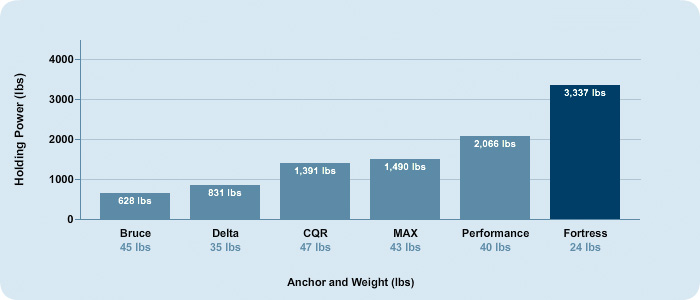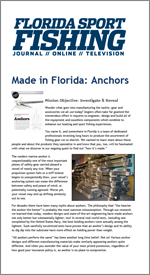Stronger Holding Power
In test after test, Fortress holds better.
Since 1986, the much lighter Fortress has out-performed substantially heavier steel models in anchor comparison tests that have been conducted around the world. From older, well-established anchor brands like the Bruce, CQR, Danforth, or Delta to newer anchor models such as the Manson, Rocna, Spade, and Ultra, the Fortress anchor has consistently demonstrated that its superior design and lightweight alloy can provide outstanding anchor holding power at a fraction of the weight.
FORTRESS TESTED AGAINST TRADITIONAL STEEL & “NEW” GENERATION ANCHOR MODELS
The United States Navy Comparative Anchor Tests
Chesapeake Bay, Little Creek Naval Base, Norfolk, VA – May 1989
Conducted by the U.S. Navy at the Little Creek Naval Amphibious Base in Norfolk, Virginia in May 1989. These anchor comparison tests were held in support of a special Navy project to find lightweight, high performance anchors for its high-tech fleet of 90 ft. long “LCAC” Assault Hovercraft.
Several sizes and types of anchor designs were tested, including several Navy design fluke anchors, such as the “Stato”, “NAV-Moor” and “LWT” which are not available to the public. These anchors weighed up to 300 lbs. The anchor holding power tests were conducted in a variety of bottoms over a two day period. In every test, the FORTRESS anchors set faster and out-performed all other anchors!
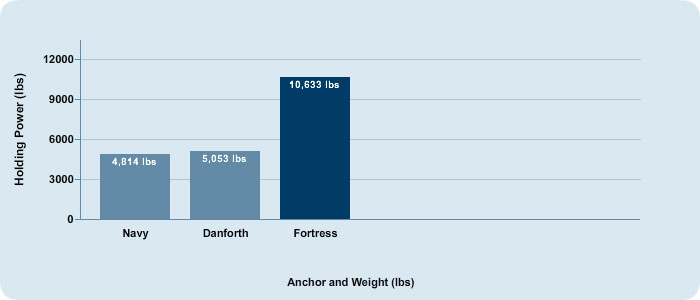
The Biscayne Bay Sand Bottom Test
Biscayne Bay, Miami, Florida – February 1990
*Guardian tested same location, August 1991
*Guardian tested same location, August 1991
Verified by E. S. Maloney, author of “Chapman Piloting, Seamanship & Small Handling”, (often called “The Boater’s Bible”). These anchor comparison tests were conducted under controlled conditions in one of the world’s most common bottoms: coarse-grain sand.
The tests compared the results of tests of 6 of the most popular anchors of similar sizes, using a 70 ft. commercial tug boat as the test vessel. This anchor holding power test was witnessed by nearly a dozen editors of major boating magazines, as well as representatives from competing anchor manufacturers.
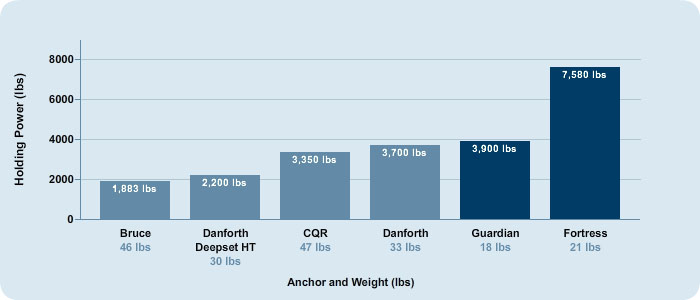
The San Francisco Bay Soft Mud Bottom Test
San Francisco Bay, CA – April 1990
*Guardian tested same location, August 1991
*Guardian tested same location, August 1991
Sponsored by a major U.S. marine equipment supplier, these soft mud anchor comparison tests were also verified by E. S. Maloney and witnessed by boating journalists and competing manufacturers.
This soft mud anchor holding power test served to illustrate the dramatic effects that differing bottom types can have upon various anchor designs. These tests also marked the debut of FORTRESS’ revolutionary adjustable shank-fluke angle feature (from 32° to 45°), which provided an amazing 263% holding power increase in soft mud!
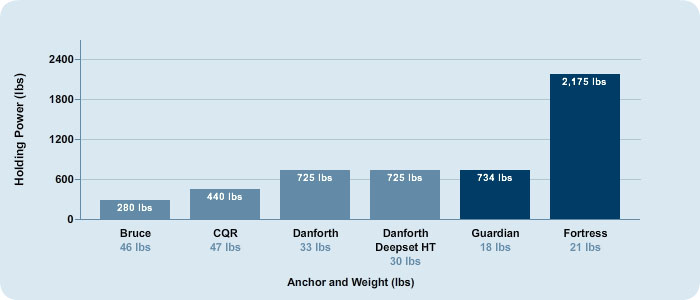
The French Regulatory Anchor Tests
Mediterranean Sea, Cannes, France – April 1992
These anchor comparison tests were conducted to provide data to the French Government for the purpose of re-writing French Maritime Regulations concerning anchor requirements. The old laws required vessels to carry anchors of specified weights without regard to a particular anchor’s performance characteristics. The tests were conducted on the French Rivera, and were reported and verified by Mr. Bernard Espeli, a leading French Maritime expert. Editorial representatives from France’s five leading boating magazines were also in attendance and the anchor holding power test results have been widely reported in Europe.

The Vryhof Ankers, bv Tank Tests
Krimpen, Holland – April 1990
The Dutch company, Vryhof Ankers, bv, is the world’s leading manufacturer of large anchors for use in the offshore oil platform industry. These anchor comparison tests were conducted in the companies’ sophisticated laboratory anchor test tanks. Seeking to demonstrate its latest design for smaller, yacht sized anchors, the company was not prepared for the appearance of the newcomer from the United States! Because the tests compared anchors of different sizes, the results show each anchor’s performance “score” in terms of holding power-per-pound of actual weight.

Puget Sound Sailing Foundation Anchor Tests
June 1995
On June 17 and 18, 1995, the Safety at Sea Committee of the Sailing Foundation conducted anchor comparison tests on five selected sites on Puget Sound. The tests were co-sponsored by West Marine Products and attended by their representative, Chuck Hawley. Also in attendance were Portland naval architect Robert Smith who has written and tested anchor behavior extensively and Andy Peabody of Creative Marine who markets the MAX anchor. Diving services and underwater video were donated by Dwayne Montgomery of Emerald City Diving.
